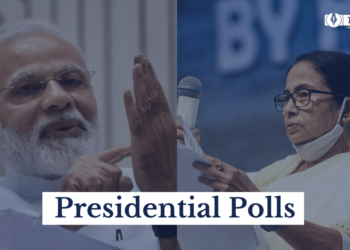[ad_1]
Who is the opposition in Indian politics? Is the status of an opposition party enough to challenge the ruling party? These questions have been ripe in Indian politics especially after the Modi government came into power.
The era of Coalition Governments:
For more than 20 years, India witnessed regimes of coalition governments. It was said that there were no major decisions and a lack of decisiveness under coalition governments. A big responsibility of Prime Ministers in coalition governments was to maintain a balance between the coalition partners.
In 2014, when BJP formed the government under the NDA coalition it was different. BJP had a commanding position with 282 seats. Its National Democratic alliance got 336 seats and people had high hopes with a full-majority government. On the other side, the biggest opposition party Congress slipped down to 44 seats. This was its lowest number of seats to date because for more than 50 years Congress was the ruling party in India.

In 2019, for the first time, BJP again formed the government with 303 seats alone. The NDA won 353 seats. It was more than its previous score. A question that followed this thumping victory was will it be possible to defeat the BJP in the future? Is there any party that can challenge the BJP?
The role of opposition in Democracy is very significant. An opposition party provides an alternative in democracy and its responsibility is to keep a check on the government. Opposition questions the government and criticizes the wrongdoings. But, what about this in the context of Indian politics?
The lesson of 2021:
Two major incidents that took place in India this year were West Bengal Elections 2021 and Farmers Protest. The Trinamool Congress managed to win West Bengal defeating BJP. Also, the farmers’ protests against the Farm Laws continued for 1 year.
Finally, they gained victory when the PM himself announced the decision to take back the 3 Farm Laws. The opposition in India could have played a major role in these events and erected a strong foothold against the ruling party, but it failed to do so. The opposition is not making full use of the right opportunity, and it’s not precise in its strategy and practice. It’s been a long time since the people have expected that at some point the opposition will emerge as a viable alternative and challenge the government.

Internal conflict in Opposition:
The BJP is in the full majority and a United Opposition is the most ideal solution of an alternative especially after the 2019 elections. But, the opposition is far from being united. Instead of taking a lead as a strong challenge, the opposition is busy in a war within itself.
After the victory of TMC in the West Bengal elections, the BJP was defeated despite one of its biggest and most expensive elections, since then TMC is trying to take the lead position among the opposition ousting Congress. More than BJP, Trinamool is eyeing to challenge congress in Goa and other Northeastern states.
Even the Aam Aadmi Party is busy challenging Congress in Punjab. Congress has a strong role to play in Uttar Pradesh elections against BJP. But it’s possibly more set to damage the Samajwadi Party. There is a slightly concealed internal competition in the Opposition to take the seat of the prime opponent for BJP.
There is no wrong to have healthy competition for the seat of the Prime opponent. Also, a few parties can be left out from the unity. But, this time the internal conflict is uncovering the inability of the Opposition parties to overcome self-political ambitions for a better sake.
This is a display of focusing on political objectives over national or democratic interests. Even if the opposition comes together now, people shall be doubtful over it.
How long would the opposition government survive? Who will lead the government? Will the opposition be able to work together? Who can directly challenge the BJP regime becoming the PM? These questions will hover over the opposition. To make matters worse, internal party conflicts have washed the credibility of becoming an alternative. For instance, the internal party conflict in Punjab has damaged the image and credibility of the party in the state.
At the same time, there are no signs of these internal opposition conflicts reducing down. There is no hint of a strong leader who would lead this unity. There is no sign of a moral or strategic leader who would cut across party lines. The election of 2019 was a lesson for the Opposition that unity is possibly the only solution now.
But, the parties are showing no sharp efforts to take this learning seriously. There is confusion, hostility, a priority of personal goals, inner conflicts, and internal politics against each other.
A proof of this was the visit of CM Mamta Banerjee to the National Capital where she met other opposition party leaders except Congress. She further claimed that a United Opposition against BJP is also possible without Congress. In reply, Congress members said there can be no strong United Opposition against BJP without Congress.

A diverse democratic structure of India needs a balanced political sphere. It includes a stable ruling party with an even stronger opposition for the welfare of India and Democracy. But, United Opposition In India Seems To Be A Myth.
Also Read: Delimitation Row in Jammu and Kashmir. Divisive or Rightful Share?
[ad_2]
Source link









